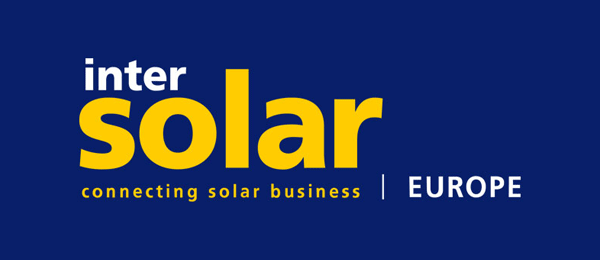
Practical Guide: How to Prepare Trade Missions That Really Work
In this practical guide, we'll show you how to prepare international business missions that truly deliver results. From defining clear objectives to selecting the target market, including all available institutional resources to support you in the process. Plus, we'll share the most common mistakes to avoid and the metrics to evaluate your business mission's success.
Business missions are strategic trips that can radically transform your company's expansion prospects. In fact, a large part of the success options in these initiatives depend exclusively on meticulous strategic and organizational planning.
What are business missions and why are they important?
When talking about expanding a business into international markets, business missions represent one of the most powerful and effective tools to achieve this goal. Understanding their operation and advantages thoroughly is essential for any company with global ambitions.
Clear definition and purpose
Business missions are defined as a business promotion technique consisting of a business trip to a specific foreign market, where a group of companies participates with the objective of establishing new commercial relationships. These aren't simply improvised visits, but carefully planned encounters to present entrepreneurs and organizations from different countries, thus facilitating potential business agreements.
These collective business trips allow participating companies to showcase their product and service catalog in another country, establish direct contact with potential clients or distributors, and firsthand evaluate business opportunities in the visited market.
The fundamental purpose of these missions is to expand foreign markets, promote sales possibilities, establish agencies, or gather valuable information for future exports. Business missions can be classified according to their purpose into:
- Study missions: Companies evaluate real opportunities and test the market.
- Sales missions: Have the concrete objective of closing business agreements.
- Exhibition missions: Companies make their portfolio known within a fair or congress.
Additionally, there are direct business missions, where companies travel to the target market, and reverse business missions, where importers, distributors or agents from other countries are invited to visit exporting companies.

Differences between fairs and business missions
Although both fairs and business missions seek to promote internationalization, they present significant differences that are important to know before deciding which to choose.
Trade fairs are massive events where companies exhibit their products or services to a general audience. Their main advantage lies in that "buyers, clients or importers are there spontaneously, interested and professionally active."
In contrast, business missions are more personalized and exclusive, with a focus on generating specific contacts and concretizing business. Each company participating in a business mission has an interview agenda prepared according to its particular needs and interests.
However, in business missions "the agenda must be organized and that carries risks," requiring more detailed planning. Therefore, they shouldn't be considered as a trip to close immediate sales, but rather as a first approach to the country and a market prospecting to learn about competition, prices, distribution channels, market tastes and technical requirements.
Benefits for exporting companies
Participating in a business mission offers significant advantages for companies looking to expand their international presence:
First, it provides access to new markets allowing companies to directly explore unknown commercial territories and establish contacts with potential clients and partners. This face-to-face contact proves invaluable, since "nothing replaces face-to-face" for establishing solid business relationships based on trust.
Additionally, it provides the opportunity to directly meet potential clients or distributors, allowing better understanding of their specific needs. Companies can evaluate existing business opportunities and conduct effective market prospecting.
Likewise, institutional support represents another considerable advantage. Organizations like ICEX, chambers of commerce and other regional entities are usually responsible for organizing these trips, offering economic help for expenses and logistical support.
Finally, these missions allow companies to strengthen their country-brand in their sector. When several producers from the same sector travel together, they generate an image of solidity and consistency in the target market, facilitating experience exchange between participants and creating new alliances and business opportunities.
Types of business missions you can organize
Choosing the right type of business mission can make the difference between success and failure in your internationalization strategy. Knowing the characteristics and advantages of each format will allow you to select the option that best adapts to your business objectives.
Direct business missions
Direct business missions consist of business trips to a target market where a group of exporting companies travels to meet with potential clients, distributors or commercial partners. These missions allow participating companies to directly showcase their product and service offerings, in addition to firsthand evaluating real business opportunities.
According to their specific purpose, we can find different types:
- Study missions: Companies evaluate real business opportunities and test the target market before committing large resources.
- Sales missions: As their name indicates, the main objective is to concretize specific business agreements with previously identified counterparts.
- Exhibition missions: Companies make their product or service portfolio known within a fair or congress, using these events as presentation platforms.
These missions are usually organized collectively to reduce costs and maximize impact, though they can also be done individually according to each company's specific needs.
Reverse business missions
In contrast with direct ones, reverse business missions invert the process: foreign companies (importers, distributors or agents) visit our country to firsthand learn about local companies' export offerings. During these visits, tours of production centers, R&D facilities or sector fairs are usually organized.
Reverse missions present significant advantages:
- They're generally more economical than direct ones and offer excellent results in locating counterparts.
- With institutional backing, they project an image of seriousness and responsibility to foreign visitors.
- They allow direct identification of potential buyers' specific needs.
- They avoid international travel for local companies.
Likewise, we find two main variants: buyer missions, focused on visits by importing or distributing companies to identify potential suppliers; and prescriber missions, aimed at sector experts (specialists or journalists) who function as opinion leaders.
Individual vs. group missions
Individual missions are mainly aimed at SMEs looking to quickly and personalizedly access international markets. This format allows completely adapting the agenda to a single company's specific needs, facilitating a more concentrated focus on very specific potential clients.
On the other hand, group business missions are usually structured in two well-differentiated phases:
- First phase: Potential clients are identified and selected, preparing a prospecting report for each participating company's evaluation.
- Second phase: Contacts are made, filtered and the final agenda with specific meetings for each participant is prepared.
During these group missions, promoting organizations usually provide complementary services like translators, local transportation, hotel reservations, social event coordination and institutional agendas.
Sectoral and multi-sector missions

Another important classification is based on missions' sectoral focus. Sectoral missions group companies from the same industrial or commercial sector, allowing creating synergies between participants and presenting a more complete and coherent offering to the target market. For example, a wine or tech sector mission.
In contrast, multi-sector missions integrate companies from various sectors under the same business trip. Though they may seem less focused, this format proves especially useful for emerging or less explored markets, where evaluating opportunities in different industries simultaneously is convenient.
There are also specific formats like official business missions, organized by government institutions that provide financial resources so companies, groups or associations can access foreign markets with official support, which usually generates more confidence among potential commercial partners.
Selecting the right format will depend on your commercial objectives, sector, available resources and maturity in the internationalization process. The fundamental thing is choosing the modality that best adapts to your specific needs and maximizes success probabilities in the target market.
How to prepare a business mission step by step
The success of any international business mission begins long before the trip itself. In fact, over half of success probabilities depend exclusively on a meticulous strategic and organizational planning phase. Let's explore in detail the five fundamental steps to prepare a business mission that truly generates results.
- Define clear objectives
Before embarking on preparing any business mission, it's fundamental to establish precisely what you seek to achieve. Ask yourself:
- Are you looking for new clients, commercial partners or distributors?
- What exactly is the profile of company you're interested in meeting with?
- Is this a prospecting trip or do you intend to close concrete negotiations?
This information will be the compass guiding all your subsequent decisions, allowing you to adapt your approach and message to the mission's target audience. Remember that in first meetings it's not so much about forcing sales closures, but about showing a receptive stance and facilitating necessary information to advance negotiations.
- Select the target market
Next, it's necessary to carefully choose the target market. This step involves conducting an exhaustive analysis about:
- The country's economic, political and social situation
- The target market's specific characteristics
- Risks and opportunities associated with the destination
Field work should include selecting the program most aligned with business objectives, studying costs, participants, scheduled activities and involved institutions. It's also advisable to research if there are available aids or subsidies for the specific program, which could significantly reduce participation costs.
- Identify key companies and contacts
Once the above is defined, dedicate time to carefully identify and select companies and contacts you wish to meet with. This process requires:
- Preparing databases of destination companies matching the profile you need
- Adequately presenting your company and products to these potential contacts
- Deeply analyzing who you'll meet: activity, facilities, relationship with your business
It's advisable that you previously research about business culture and negotiation protocols in the country you'll visit. This will prevent inappropriate behaviors during meetings and facilitate establishing fruitful business relationships.
- Prepare the meeting agenda
Subsequently, the time comes to coordinate a detailed meeting agenda. Although normally the organizing entity handles contacting potential clients and preparing agendas, it's convenient that your company actively gets involved in this process to maximize results.
When preparing the agenda:
- Define concrete objectives for each scheduled meeting
- Provide all necessary information about your company and products
- Establish a realistic schedule allowing for travel time between meetings
It's important to remember that these first meetings' main objective usually isn't closing immediate agreements, but establishing a trust bond, capturing the other party's interest and providing relevant information about your product catalog.
- Coordinate logistics and documentation
Lastly, don't underestimate logistical aspects' importance. This includes:
- Trip organization: tickets, accommodation, local transportation
- Preparing documentation, samples, products, brochures and business cards
- Translating promotional materials to the local language
- Information about the country's culture and business protocols
Consider hiring an interpreter if you don't master the local language, since clear communication is essential for your meetings' success. Likewise, prepare and translate all promotional material adapting it to the target market's characteristics.
Upon mission completion, prepare a detailed report with conclusions, contacts made, obtained information and fulfilled objectives. This follow-up is as important as prior preparation and proves fundamental to keeping alive business relationships initiated during the trip.
Institutional support and available resources
To boost business internationalization, Spain has a solid institutional support ecosystem facilitating effective business missions' development. Knowing these resources can make the difference between your international initiatives' success and failure.
Chambers of Commerce and public organizations
The main responsible parties for organizing and planning international business missions are usually public organizations like ICEX, Chambers of Commerce and various regional entities. These institutions not only help in logistical preparation, but also provide official backing generating more confidence among potential commercial partners.
Chambers of Commerce stand out for their experience organizing this type of initiatives. For example, the Spain-USA Chamber of Commerce facilitates Spanish companies' access to the American market and organizes reverse business missions so American entrepreneurs can learn about Spanish companies. Likewise, Álava, Bilbao and Gipuzkoa Chambers organize missions with the Basque Internationalization Agency's support.
Through the International Promotion Program (PIP), Chambers make available to companies instruments and activities supporting their internationalization processes, including direct and reverse business missions, fair participation and fair visits.
Advisory and translation services
Interpretation services prove especially valuable when language represents a barrier. These services include both consecutive interpretation during business meetings and international department representation to facilitate communication with target market clients.
Likewise, translating commercial documents like distribution contracts or documentary credits is another essential service. Many specialized consulting firms also offer support in mission planning and logistics, advisory throughout the process and document management.
To maximize these resources, it's advisable to directly contact your local Chamber of Commerce or ICEX. You can also consult their respective websites, where you'll find updated information about upcoming missions and available aid calls.
Common mistakes when organizing business missions
Despite the most detailed planning, certain mistakes can completely sabotage your business missions' results. Knowing these common traps will help you avoid them and maximize your investment's return.

Lack of cultural preparation
Lack of knowledge about the destination country's business culture is one of the main obstacles to success. According to international business experts, understanding cultural differences not only helps you better understand your commercial partners, but proves essential to building lasting relationships.
It's fundamental to previously inform yourself about greeting forms, appropriate attire, punctuality and topics to avoid in business conversations. Negotiations may be more formal or informal depending on the country, and adapting to these cultural norms will significantly increase your encounters' effectiveness.
Not defining measurable objectives
Vague or imprecise objectives are enemies of concrete results. Defining measurable objectives allows, above all, preventing a business mission's actions from dissolving into directionless tasks. Additionally, it facilitates constantly supervising progress and making timely adjustments when something isn't working as expected.
To make your objectives truly useful, establish clear success indicators, use a defined time frame and break down your goals into verifiable intermediate steps.
Improvisation in meetings
Many meetings fail due to inadequate preparation. In the international context, this improvisation proves particularly costly. The key lies in maintaining active listening during encounters and avoiding going in with "no" as your default position.
Before each meeting, adequately prepare for all possible doubts and questions: your interlocutors will want to know aspects like your company's size, sector experience or financial status. Remember that it's not about forcing sales closures in the first visit, but effectively transmitting your proposal's value.
Not doing follow-up
A business mission's success fundamentally depends on post-mission stage handling. However, many companies neglect this crucial phase, losing valuable opportunities by not maintaining contact.
Upon mission completion, dedicate time to analyze all contacts and obtained information. Prepare a detailed report including satisfied objectives and identified opportunities. Subsequently, implement follow-up actions like personalized emails, second meeting proposals or even special offers as continuation to initiated conversations.
How to measure a business mission's success
Adequately measuring your business missions' results is fundamental to justify made investments and improve future strategies. A systematic evaluation will allow identifying which aspects worked correctly and which need adjustments.
Performance indicators (sales, contacts, agreements)
To objectively evaluate a business mission's success, it's necessary to establish specific KPIs (Key Performance Indicators) aligning with your original objectives. These indicators can include:
- Sales volume effected after the mission
- Number and quality of contacts made during the trip
- Agreements proposed or closed as direct meeting results
Additionally, we can analyze specific metrics like:
- Quotes presented to closed sales conversion rate
- Number of contact points needed to advance negotiations
- Sales cycle duration from first contact to closure
- Cost-benefit analysis also proves essential, calculating average cost per meeting to determine if sold margin covers participation expenses.
Qualitative meeting evaluation
Not everything boils down to numbers. Upon mission completion, it's important to conduct a qualitative evaluation including:
- If the mission was adequate for our initial objectives
- If we managed to correctly transmit our company's image
- Buyers' quality according to nationality, company position and decision-making level
- Interest level shown toward our products or services
This evaluation should be reflected in a report collecting both initial expectations and final objectives' achievement, including all information obtained from contacts and other companies.
Follow-up and opportunity closure
A business mission's success fundamentally depends on post-mission stage handling. Therefore, implement these follow-up strategies:
- Send personalized emails to all made contacts
- Propose second meetings including additional team members when appropriate
- Conduct social media follow-up and offer special discounts as continuation to initiated conversations
Remember that international negotiations are usually slow. If you don't achieve your objective as quickly as you'd like, don't give up. Find excuses to reestablish contact later, like launching a new product or a subsequent country visit.
Finally, keep in mind that often the decision to choose one product over another may be conditioned by the human factor and trust we projected during our encounters.
Conclusion
The key to success in your business missions
Undoubtedly, business missions represent a powerful tool for any company's international expansion. Throughout this article, we've analyzed everything from their definition and purpose to how to effectively measure their results.
Consequently, defining clear objectives, adequately selecting the target market and cultural preparation become fundamental pillars before undertaking the trip.
Available options are broad. On one hand, direct missions allow you to personally visit the target market. On the other, reverse ones facilitate potential clients learning about your company without international travel. Additionally, both group and individual modalities offer specific advantages according to your particular needs.
Results measurement, though frequently underestimated, constitutes a crucial phase. Quantitative indicators like sales and contacts should complement qualitative evaluations valuing aspects like projected image or meeting quality.
Certainly, organizing a business mission requires time, dedication and resources. However, potential benefits considerably outweigh made investments. Our experience shows that these initiatives, when correctly planned, radically transform companies' international growth prospects.










